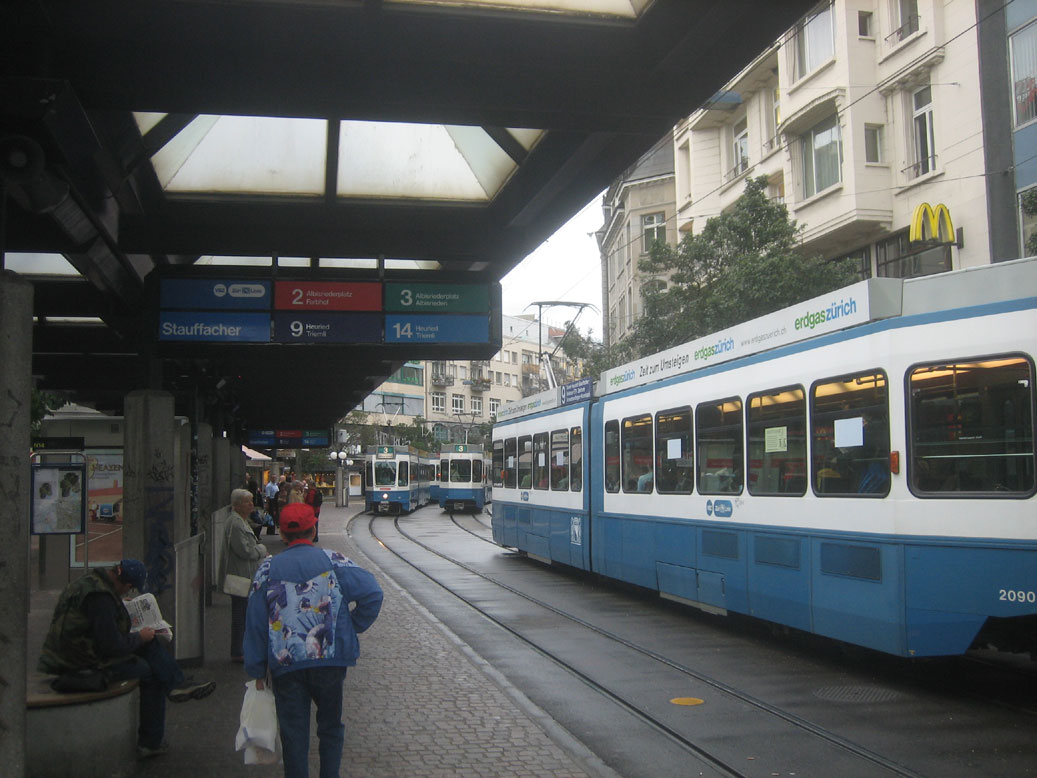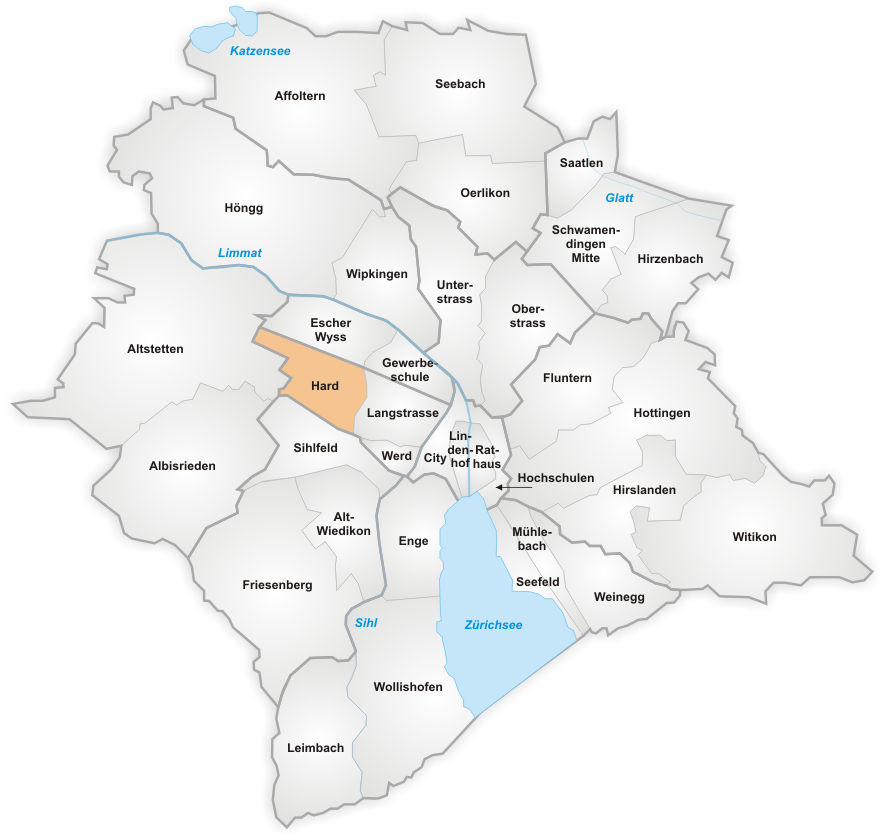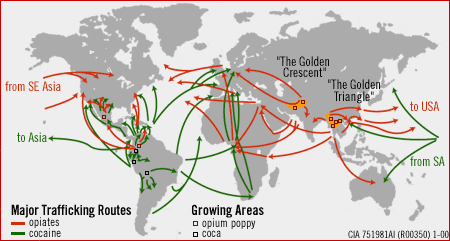|
Aussersihl
Aussersihl is a district in the Swiss city of Zürich. Known officially as District number 4, the district is known as colloquially ''Chreis Cheib'', ''cheib'' being the Zürich German word for an animal cadaver. It earned the name as the area historically contained pits for the deposition of dead animals. It comprises the quarters Werd, Langstrasse and Hard. History The area of Aussersihl together with that of District 5 historically corresponds to the ''Sihlfeld'', the pastures and fields between the village of Wiedikon (now district 3) and the Limmat. The area was built up during the 18th century was separated from Wiedikon as the Aussersihl municipality on 27 March 1787. Aussersihl quickly grew into a town during industrialisation, mostly inhabited by factory workers, at times counting more inhabitants than the city itself. The municipality could not cope with its rapid growth and went bankrupt. It was incorporated into the Zürich municipality together with Wiedikon as ... [...More Info...] [...Related Items...] OR: [Wikipedia] [Google] [Baidu] |
Werd (Zürich)
Werd is a quarter in district 4, Aussersihl in Zürich, Switzerland. The three quarters of district 4, Aussersihl are Werd, Langstrasse and Hard. Werd is the southernmost quarter of district 4 and it borders with the Langstrasse, Quarter of district 4 to the north; the City Quarter of district 1, Altstadt to the east; the Sihlfeld Quarter of district 3, Wiedikon to the west, and the Enge Quarter of district 2, West side of the Lake to the south. Werd (an old German word for ''river island'') was formerly a municipality of Aussersihl, having been incorporated into Zürich in 1893. The separation into the current districts 3, 4 and 5 dates to 1913. Werdinsel refers to the name of the district, but it is a Limmat island situated in Zürich-Höngg Höngg is a quarter in district 10 in Zürich. It was formerly a municipality of its own, having been incorporated into Zürich in 1934. The quarter has a population of 21,186, distributed across an area of 6.98 km². ... [...More Info...] [...Related Items...] OR: [Wikipedia] [Google] [Baidu] |
Zürich
, neighboring_municipalities = Adliswil, Dübendorf, Fällanden, Kilchberg, Maur, Oberengstringen, Opfikon, Regensdorf, Rümlang, Schlieren, Stallikon, Uitikon, Urdorf, Wallisellen, Zollikon , twintowns = Kunming, San Francisco Zürich () is the largest city in Switzerland and the capital of the canton of Zürich. It is located in north-central Switzerland, at the northwestern tip of Lake Zürich. As of January 2020, the municipality has 434,335 inhabitants, the urban area 1.315 million (2009), and the Zürich metropolitan area 1.83 million (2011). Zürich is a hub for railways, roads, and air traffic. Both Zurich Airport and Zürich's main railway station are the largest and busiest in the country. Permanently settled for over 2,000 years, Zürich was founded by the Romans, who called it '. However, early settlements have been found dating back more than 6,400 years (although this only indicates human presence in the area and not the presence of a town that early ... [...More Info...] [...Related Items...] OR: [Wikipedia] [Google] [Baidu] |
Sozialwerke Pfarrer Sieber
''Sozialwerke Pfarrer Sieber'' (SWS) is a Swiss charitable foundation and relief organisation based the municipality of Zürich. Initiated in 1963 by Ernst Sieber, a pastor associated with the Reformierte Kirche des Kantons Zürich, the relief organisation was founded in 1988. SWS supports ''disadvantaged people, to help to alleviate the hardships around addiction, disease, violence and homelessness''. History and orientation In winter 1963, the first homeless community in a bunker in Zürich-Aussersihl was founded by Ernst Sieber, and in fact the charity started its first project that was follow by numerous initiatives over the decades, among them ''Sune-Dörfli'', ''Sune-Egge'', ''Ur-Dörfli'', ''Sune-Stube'', ''Pfuusbus'', and ''Brothausen'' in Zürich-Affoltern for homeless people, or food supplement for poor people. In 1988 the foundation was formally established. The foundation claims to support, ''committed on the basis of the Gospel for needy fellow man...to help to all ... [...More Info...] [...Related Items...] OR: [Wikipedia] [Google] [Baidu] |
Ernst Sieber
Ernst Sieber (; 24 February 1927 – 19 May 2018) was a Swiss pastor and social activist who was one of the most popular and best known personalities associated with the Swiss Reformed Church. He was ordained in the Evangelical Reformed Church of the Canton of Zürich. In 1963 he initiated the basis for the relief organisation Sozialwerke Pfarrer Sieber, founded in 1988 for "disadvantaged people, to help to alleviate the hardships around addiction, disease, violence and homelessness". Sieber wrote books about his work as social worker to finance the foundation. From 1991 to 1995 he represented the citizens of the Canton of Zürich as member of the Evangelische Volkspartei (EVP) political party in the ''Nationalrat'', the lower Swiss parliament's house. Early life Born as the son of Katharina Josepha née Hess and Hans, Sieber was raised in the municipality of Horgen on the Zürichsee, and was a citizen of Zürich. Sieber called himself a "dreamy child, I preferred ... [...More Info...] [...Related Items...] OR: [Wikipedia] [Google] [Baidu] |
Stauffacher, Zürich
''Stauffacher'' is a tram junction (lines 2, 3, 8, 9, 14) in Aussersihl, Zurich, next to the St. Jakob church, situated along the ''Badenerstrasse'' between the ''Bäcker'' and the ''Stauffacher'' streets. The tram stop was named after the street, which had been named for Werner Stauffacher in 1893. ''Stauffacher'' is officially just the name of the tram stop, not the square, and there was formerly a ''Stauffacherplatz'' some 200 m farther along the street towards the Sihl (named in 1898). Since the name of the tram stop induced common usage to associate ''Stauffacherplatz'' with the tram stop, leading to confusion with the actual ''Stauffacherplatz'', the latter was renamed to '' Ernst-Nobs-Platz'' in 2003. St. Jakob was the site of a sick-house outside the town of Zurich and an associated chapel since the 11th century. The first historical mention of the St. Jakob church dates to 1221. It was the site of the Battle of St. Jakob an der Sihl The Battle of St. Jakob an der S ... [...More Info...] [...Related Items...] OR: [Wikipedia] [Google] [Baidu] |
Langstrasse
Langstrasse (literally "long street") is a street and quarter in district 4 in Zürich. Langstrasse begins near the district courts and extends north-northeast to the train tracks of Zürich Hauptbahnhof. The following short segment of Langstrasse leads towards Limmatplatz in district 5. Langstrasse is also referred to as a general area including the street and its surrounding tertiary streets. The quarter has a population of 10,500 on an area of 1.13 km². It is notorious as Zürich's red light district, with an above-average crime rate, drug dealing and brothels. It is also the most overtly multicultural spot in Zürich, with a rate of 42% foreign residents, among the highest in Zürich. Due to the problems in this district, the City Council approved the comprehensive project "Langstrasse PLUS" on 14 March 2001 to achieve an improvement in public order and safety. As the historical quarter of factory workers during Industrialisation, Aussersihl is also the traditional ... [...More Info...] [...Related Items...] OR: [Wikipedia] [Google] [Baidu] |
Hard (Zürich)
Hard is a quarter in the district 4 of Zürich , neighboring_municipalities = Adliswil, Dübendorf, Fällanden, Kilchberg, Maur, Oberengstringen, Opfikon, Regensdorf, Rümlang, Schlieren, Stallikon, Uitikon, Urdorf, Wallisellen, Zollikon , twintowns = Kunming, San Francisco Z .... It was formerly a part of Aussersihl municipality, which was incorporated into Zürich in 1893. The quarter has a population of 12,715 distributed on an area of 1.46 km² (as of 2009). Points of interest Swissmill is the largest mill in Switzerland that operates 800 tons of grain. Although the silo's exterior and height is disputed, the municipal authorities claim that ''the silo is intentionally designed in its aesthetically conscious way. Its external appearance is intended to express its interior – an industrial plant''. References External links District 4 of Zürich Former municipalities of the canton of Zürich {{Zurich-geo-stub ... [...More Info...] [...Related Items...] OR: [Wikipedia] [Google] [Baidu] |
Industrialisation
Industrialisation ( alternatively spelled industrialization) is the period of social and economic change that transforms a human group from an agrarian society into an industrial society. This involves an extensive re-organisation of an economy for the purpose of manufacturing. Historically industrialization is associated with increase of polluting industries heavily dependent on fossil fuels. With the increasing focus on sustainable development and green industrial policy practices, industrialization increasingly includes technological leapfrogging, with direct investment in more advanced, cleaner technologies. The reorganization of the economy has many unintended consequences both economically and socially. As industrial workers' incomes rise, markets for consumer goods and services of all kinds tend to expand and provide a further stimulus to industrial investment and economic growth. Moreover, family structures tend to shift as extended families tend to no longer li ... [...More Info...] [...Related Items...] OR: [Wikipedia] [Google] [Baidu] |
District 4 Of Zürich
A district is a type of administrative division that, in some countries, is managed by the local government. Across the world, areas known as "districts" vary greatly in size, spanning regions or counties, several municipalities, subdivisions of municipalities, school district, or political district. By country/region Afghanistan In Afghanistan, a district ( Persian ps, ولسوالۍ ) is a subdivision of a province. There are almost 400 districts in the country. Australia Electoral districts are used in state elections. Districts were also used in several states as cadastral units for land titles. Some were used as squatting districts. New South Wales had several different types of districts used in the 21st century. Austria In Austria, the word is used with different meanings in three different contexts: * Some of the tasks of the administrative branch of the national and regional governments are fulfilled by the 95 district administrative offices (). The area a d ... [...More Info...] [...Related Items...] OR: [Wikipedia] [Google] [Baidu] |
Drug Dealing
The illegal drug trade or drug trafficking is a global black market dedicated to the cultivation, manufacture, distribution and sale of prohibited drugs. Most jurisdictions prohibit trade, except under license, of many types of drugs through the use of drug prohibition laws. The think tank Global Financial Integrity's ''Transnational Crime and the Developing World'' report estimates the size of the global illicit drug market between US$426 and US$652billion in 2014 alone. With a world GDP of US$78 trillion in the same year, the illegal drug trade may be estimated as nearly 1% of total global trade. Consumption of illegal drugs is widespread globally and it remains very difficult for local authorities to thwart its popularity. History The government of the Qing Dynasty issued edicts against opium smoking in 1730, 1796 and 1800. The West prohibited addictive drugs throughout the late 19th and early 20th centuries. Beginning in the 18th century, British merchants from ... [...More Info...] [...Related Items...] OR: [Wikipedia] [Google] [Baidu] |
Prostitution
Prostitution is the business or practice of engaging in Sex work, sexual activity in exchange for payment. The definition of "sexual activity" varies, and is often defined as an activity requiring physical contact (e.g., sexual intercourse, non-penetrative sex, oral sex, etc.) with the customer. The requirement of physical contact Prostitution#Medical situation, also creates the risk of transferring diseases. Prostitution is sometimes described as sexual services, commercial sex or, colloquially, hooking. It is sometimes referred to euphemistically as "the world's oldest profession" in the English-speaking world. A person who works in this field is called a prostitute, or more inclusively, a sex worker. Prostitution occurs in a variety of forms, and prostitution law, its legal status varies from Prostitution by country, country to country (sometimes from region to region within a given country), ranging from being an enforced or unenforced crime, to unregulated, to a regulated ... [...More Info...] [...Related Items...] OR: [Wikipedia] [Google] [Baidu] |
Crime Rate
Crime statistics refer to systematic, quantitative results about crime, as opposed to crime news or anecdotes. Notably, crime statistics can be the result of two rather different processes: * scientific research, such as criminological studies, victimisation surveys; * official figures, such as published by the police, prosecution, courts, and prisons. However, in their research, criminologists often draw on official figures as well. Methods There are several methods for the measuring of crime. Public surveys are occasionally conducted to estimate the amount of crime that has not been reported to police. Such surveys are usually more reliable for assessing trends. However, they also have their limitations and generally don't procure statistics useful for local crime prevention, often ignore offenses against children and do not count offenders brought before the criminal justice system. Law enforcement agencies in some countries offer compilations of statistics for various types ... [...More Info...] [...Related Items...] OR: [Wikipedia] [Google] [Baidu] |





